Digital Poster
Analysis Methods
ISMRM & ISMRT Annual Meeting & Exhibition • 10-15 May 2025 • Honolulu, Hawai'i

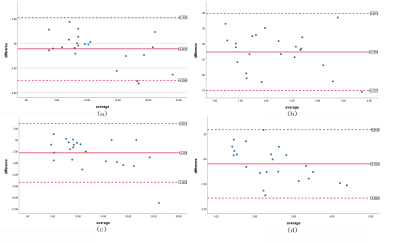 |
Computer Number: 17
4142. Evaluating
the Reproducibility of Hemodynamic Force Analysis in Cardiac MRI
Using the Bland-Altman Method and ICC
M. Hu, Z. Xu, J. Qi, X. Yue, J. Li, T. Li, K. He
Medical Innovation Research Department, Chinese PLA General Hospital, China, Beijing, China
Impact: This study demonstrates the reliability of HDF
analysis, promoting its adoption for non-invasive assessment
of cardiac function and potentially aiding in the early
detection and management of cardiac pathologies.
|
|
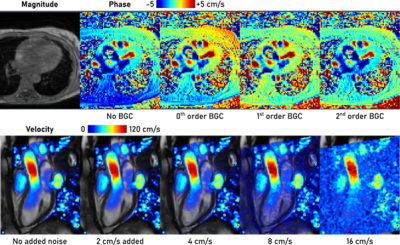 |
Computer Number: 18
4143. Noise
and background phase correction in 4D flow CMR: effects on
aortic flow, hemodynamic forces and kinetic energy
K. Pola, J. Töger, P. Arvidsson
Lund University, Skåne University Hospital Lund, Department of Clinical Sciences Lund, Clinical Physiology, Lund, Sweden, Lund, Sweden
Impact: Hemodynamic forces are insensitive to background
correction strategy and noise. In contrast, kinetic energy
is significantly affected by noise levels seen in clinical
scans. Hemodynamic force analysis therefore holds promise as
a robust clinical measure of cardiac function.
|
|
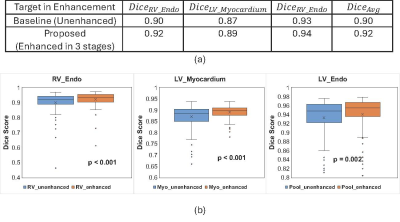 |
Computer Number: 19
4144. Cascade
Disentangled Quality Enhancement for Improved Biventricular
Segmentation in Cardiac Cine MRI
J. Wang, M. Mehrnia, M. Elbayumi, M. Elbaz
Northwestern University, Evanston, United States
Impact: The image-quality assessment strategy may be
helpful in image quality evaluation. The proposed method
probably could be extended to other imaging applications
with various datasets, potentially improving the accuracy in
clinical diagnosis and prediction.
|
|
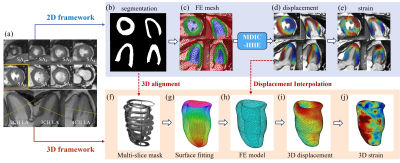 |
Computer Number: 20
4145. Pathological
Myocardial Strain Analysis Using a Novel Motion Tracking Method
in 3D C-MRI
H. Liu, Z. Liu, X. Qin, Y. Jin, W. Cui, Y. Zheng, H. Zheng,
D. Liang, J. Liang, D. Luo, Z. Hu
National Cancer Center/National Clinical Research Center for Cancer/Cancer Hospital & Shenzhen Hospital, Chinese Academy of Medical Sciences and Peking Union Medical College, Shenzhen, China
Impact:
Our novel motion tracking framework enables low-contrast C-MRI to measure 2D/3D myocardial motion accurately, aiding cardiomyopathy classification and precise localization of myocardial dysfunctions. |
|
 |
Computer Number: 21
4146. Comparison
of transform and image domain denoising techniques for
multi-slice multi-echo T2 relaxation time mapping
C. Johnson, S. Parvaze, E. Buko, S. Moeller
University of Minnesota, Saint Paul, United States
Impact: T-NORDIC provides significant advantages for
denoising of MSME T2 mapping acquisitions compared to image
domain methods, including improved quantitative accuracy and
spatial fidelity, providing a robust approach to improve SNR
efficiency while being conservative and preserving subtle
local texture.
|
|
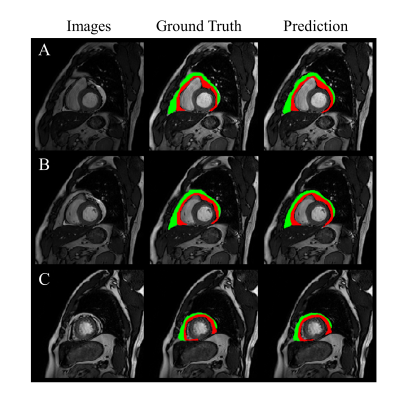 |
Computer Number: 22
4147. Epicardial
and paracardial adipose tissue segmentation in short-axis
cardiac cine MRI
R. Zhang, Z. Zhou, W. Xu, L. Ni, M. Jiang, P. Hu
ShanghaiTech University, Shanghai, China
Impact: The proposed modules can effectively and
precisely segment fat tissues even when the pericardium is
challenging to observe, suggesting its potential for
clinical applications.
|
|
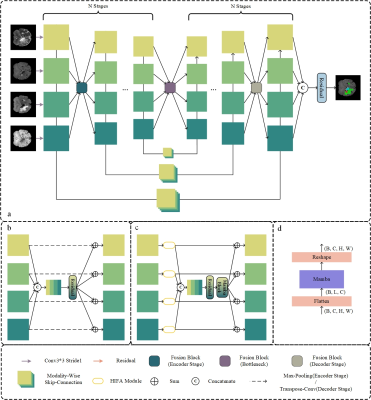 |
Computer Number: 23
4148. nnMU-Net:A
self-configuring neural network architecture with multi-modality
information fusion for medical MR image segmentation
Y. Liu, Y. Liu, H. Zhan
Hefei University of Technology, Hefei, China
Impact: Our method leverages the features from
multi-modality MRI to improve the segmentation accuracy and
can automatically configure itself, including preprocessing,
network architecture, training and post-processing for
different modalities. Also, it provides the application
possibility for other multi-modality segmentation tasks.
|
|
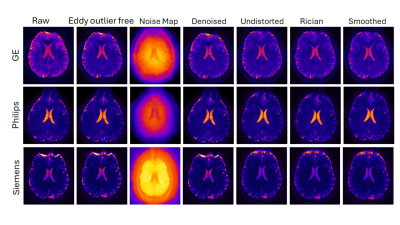 |
Computer Number: 24
4149. Assessing
DWI Data Consistency Across MRI Manufacturers and Imaging Sites
E. Bhuiyan, Q. Luo, P. Prasad, X. Guo, P-S Zhong, M.
Karaman, K. Wang, L. Frey-Law, J. Ford, S. Sutherland, T.
Wager, P. Sadil, M. Johnson, M. Lindquist, R. McCarthy, A.
Buvanendran, J. Burns, J. Jacobs, X. Zhou, t. A. Consortium
University of Illinois Chicago, Chicago, United States
Impact: This study offers insights into DWI data
consistency for multicenter neuroimaging studies involving
advanced DWI across major MRI manufacturers.
|
|
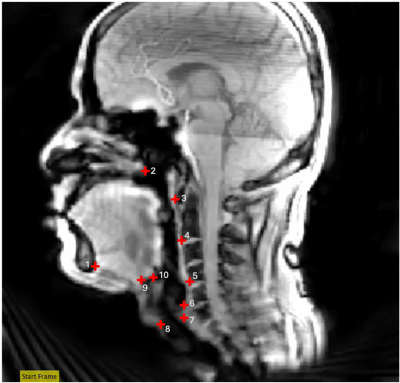 |
Computer Number: 25
4150. Preliminary
Validation of SimulScan in obtaining Swallowing Biomechanics
compared to Traditional Videofluoroscopic methods
C-H Peng, V. Krishna, A. Szlembarski, W. Pearson, B. Sutton,
G. Malandraki
Purdue University, West Lafayette, United States
Impact: SimulScan captures biomechanical information
comparable to traditional VFSS, while also allowing for the
simultaneous examination of the neural mechanisms underlying
these mechanisms, paving the way for targeted,
physiology-based interventions for patients with dysphagia.
|
|
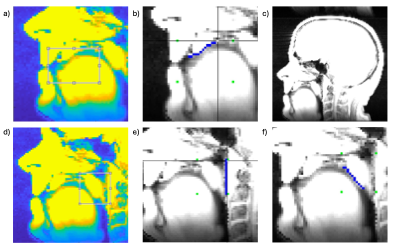 |
Computer Number: 26
4151. Semi-automatically
tracking articulatory features in 2D dynamic sagittal MRI images
J. Kim, L. Spinu, J. Woo, F. Xing, J. Perry, I. Gilbert, B.
Sutton
University of Illinois at Urbana-Champaign, Champaign, United States
Impact: These results provide insights into tongue and
velum movement during speech, potentially aiding clinicians
in diagnosing speech disorders and improving therapeutic
techniques. This study also suggests a question on the
neural control of articulation and speech production
accuracy.
|
|
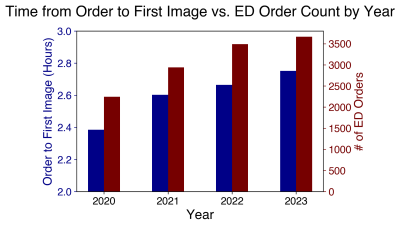 |
Computer Number: 27
4152. Quantifying
the Impact of FAST MRIs and a Dedicated Emergency Department MRI
System on Patient Wait Times
S. Chu, A. Pirasteh, E. Briel, K. Klein, J. Garrett, S.
Reeder, L. Eisenmenger
University of Wisconsin-Madison, Madison, United States
Impact: Implementation of dedicated MRI hours and FAST
protocols for patients from the emergency department
decreased the time between MRI order and imaging,
facilitating improved patient care.
|
|
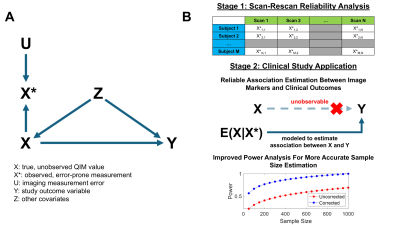 |
Computer Number: 28
4153. Enhancing
Analysis and Study Design of Medical Imaging Markers Through
Measurement Error Modeling
X. Wang, W. Zhao, Y. Wang, D. Kwon, T-Y Su, Z. Wang, D. Ma
Cleveland Clinic, Cleveland, United States
Impact: We demonstrate how measurement error modeling
significantly enhances clinical imaging study design and
analysis by improving parameter estimation, statistical
power, and study reliability. Our methodology is
particularly valuable for multicenter and longitudinal
studies where measurement variability is a key concern.
|
|
 |
Computer Number: 29
4154. Comprehensive
segmentation of deep grey subcortical nuclei leveraging
white-matter nulled contrast
M. Saranathan, G. Cogliandro, T. Hicks, D. Patterson, B.
Vachha, A. Cacciola
University of Massachusetts Chan Medical School, Worcester, United States
Impact: This method facilitates careful investigation of
the role of deep grey nuclei by enabling the use of
conventional T1 data from large public databases, which has
not been possible, hitherto, due to lack of robust
segmentation tools.
|
|
 |
Computer Number: 30
4155. Enhanced
IDEAL CSI in Hyperpolarized ¹³C MRI Using Single-Dataset K-Space
Analysis for Metabolic Exchange Rate Estimation
C-Y Hsieh, Y-C Lai, K-Y Lu, G. Lin
Chang Gung University, Taoyuan, Taiwan
Impact: This work introduces a single-dataset K-space
analysis method enhancing IDEAL CSI in hyperpolarized ¹³C
MRI, enabling accurate estimation of metabolic exchange
rates, which simplifies data analysis and advances
understanding of disease mechanisms and treatment responses.
|
|
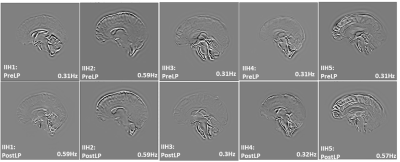 |
Computer Number: 31
4156. 3D
amplified MRI (aMRI) and Dynamic Mode Decomposition (DMD)
analysis of ICP-driven cranio-spinal motion
H. Kumar, E. Kwon, J. Wright, I. Terem, A.
Sharifzadeh-Kermani, G. Maso Talou, S. Safaei, D. Dubowitz,
M. Scadeng, T. Emsden, P. Condron, L. Potter, D. Cornfeld,
S. Mackenzie, G. Wilson, D. Freschini, J. Lee, M. McDonald,
V. Shim, S-J Guild, H. Danesh-Meyer, M. Kurt, S. Holdsworth
GE Healthcare, Auckland, New Zealand
Impact: This study provides preliminary insights into
how ICP change influenced cranio-spinal pulsatility.
Spatiotemporal analysis methods have the potential to
enhance patient care and support the continued development
of advanced MRI techniques for clinical application.
|
|
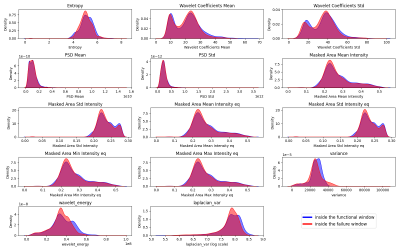 |
Computer Number: 32
4157. Radio
frequency coil failure assessment through characterization of
coil noise
K. Mylostna, S. Nelson, I. Osman, M. Shehata, T. Bjarnason,
E. MacMillan, R. Feldman
UBC Okanagan, Kelowna, Canada
Impact: This result paves the way for real-time quality
assurance in MRI systems. The work has the potential to
reduce rescans, optimize workflow efficiency, and ultimately
benefit both clinical outcomes and use of healthcare
resources.
|
The International Society for Magnetic Resonance in Medicine is accredited by the Accreditation Council for Continuing Medical Education to provide continuing medical education for physicians.